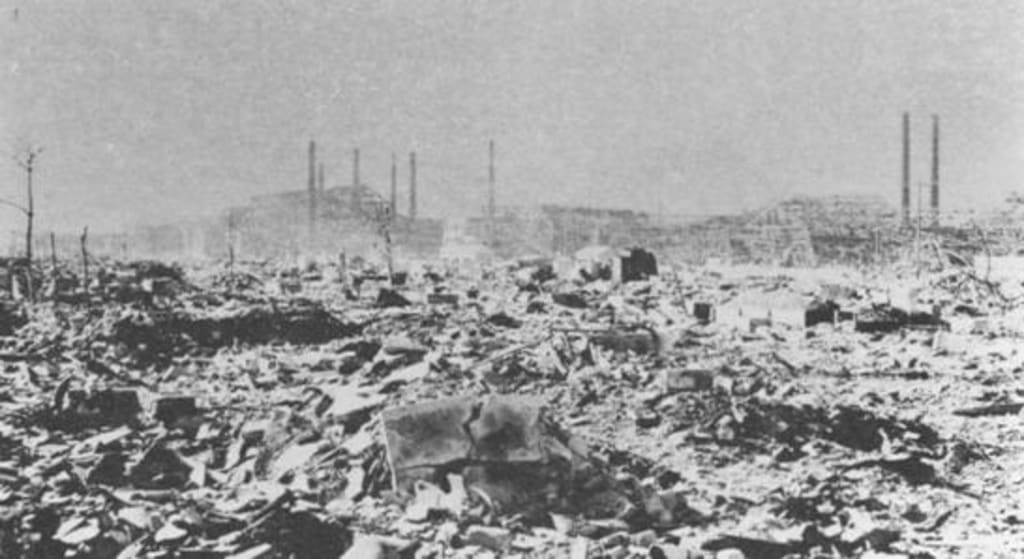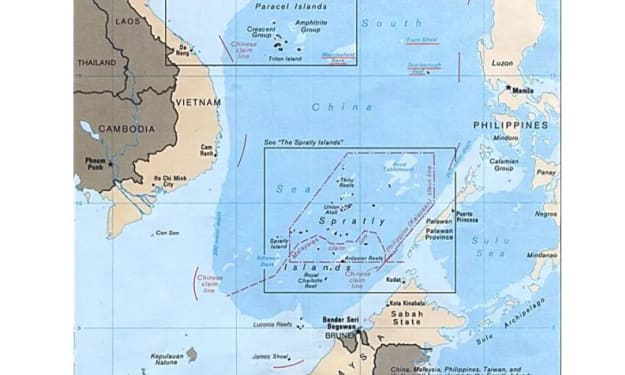The process of demilitarization of Japan after World War II.

The primary factor influencing Japan's disarmament process should be recognized as the geographical difficulties faced by the authorities responsible for the disarmament. This refers to the placement of equipment and weaponry, as Japan was well-prepared to defend its main islands and had preemptively constructed makeshift fortresses equipped with brigades. Strategically important positions, such as the peninsula forming Tokyo Bay, the coastline of Fukuoka (northwestern Japan), and many other positions, were fortified with heavy artillery. In general, significant stocks of military equipment and other assets were dispersed throughout Japan, in thousands of hidden caches located deep in the mountains, in underground tunnels, and camouflaged warehouses, as well as scattered across the extended Japanese landscape.
According to a report from specially created inspections, as of October 1945, the Japanese government adhered to the terms of surrender and fulfilled all disarmament obligations.
As soon as the surrender agreements were announced, a white flag was raised on the islands guarding Tokyo Bay, and the Allied fleet entered Japan's capital, Tokyo.
The main striking forces in Japan were considered to be the navy and aviation, so the demilitarization of these objects received the most attention. There were nearly 300 airfields on the main islands, ranging from bomber airfields to kamikaze airfields. These three hundred airfields housed about 6,000 aircraft of various types and purposes.
As for the navy, it was distributed across Japan in various ports and anchored. The fleet consisted of aircraft carriers, battleships, destroyers, submarines, and smaller vessels.
According to Douglas MacArthur's memoirs, "The system of destruction is simple but considered reliable. Two men on a tractor pull the aircraft to the designated burning zone. One man searches the entire plane for bombs and ammunition. Another punctures all fuel tanks to prevent explosions. The rest stand by the gas pump sprayer and, on the 'all clear' signal, spray Japanese synthetic gas over the aircraft to be destroyed. Then it is set on fire, and the crew moves to the next aircraft."
Due to the large number of departments and aviation equipment, the exact number of destroyed aircraft is unknown, but after the disarmament process was completed, the U.S. occupation authorities declared that there were no aircraft left on the main Japanese islands.
Regarding the navy, the demilitarization program was completed on January 15, 1949.
However, this concerns equipment, but there were also obligations to disarm ordinary servicemen, search for ammunition depots, explosives, and other assets. This duty was entrusted to the Japanese themselves, more precisely, to Japanese officers. The procedure for disarming soldiers was quite simple: according to the directives of the occupation forces' headquarters, the weapons were confiscated by Japanese army officers from their units, which, in turn, collected them in specially designated premises, after which the information was reported to higher command.
In conclusion, it can be said that the plans to transform Japan into a demilitarized state were implemented in the shortest possible time, allowing for a focus on economic and political reforms in Japan. Also, according to the author, this mechanism of demobilization and disarmament was formed based on the previous experience of World War I, when the Allies simultaneously did not do enough in terms of disarmament and demobilization of Germany, which subsequently allowed it to bypass the ban and rebuild its military-industrial complex, and did too much in terms of destroying Germany's political image and humiliating its people, which later turned into resentment and hatred, as seen in WWII.
As for the attitude of the American occupation forces toward the Japanese, it can be noted that from the beginning of the occupation, the Americans began to pressure the Japanese to abandon the ideas of a "superior race." According to Professor Yukiko Koshiro, author of the article "American Occupation of Japan as a Mutual Racial Experience" in The Journal of American-East Asian Relations [4, p. 321], the Japanese rejected their racial ideals, took responsibility for all their actions, and embarked on the path of strengthening ties with the United States, eventually transitioning into a "student (Japan) – teacher (USA)" relationship.
About the Creator
Enjoyed the story? Support the Creator.
Subscribe for free to receive all their stories in your feed. You could also pledge your support or give them a one-off tip, letting them know you appreciate their work.





Comments
There are no comments for this story
Be the first to respond and start the conversation.